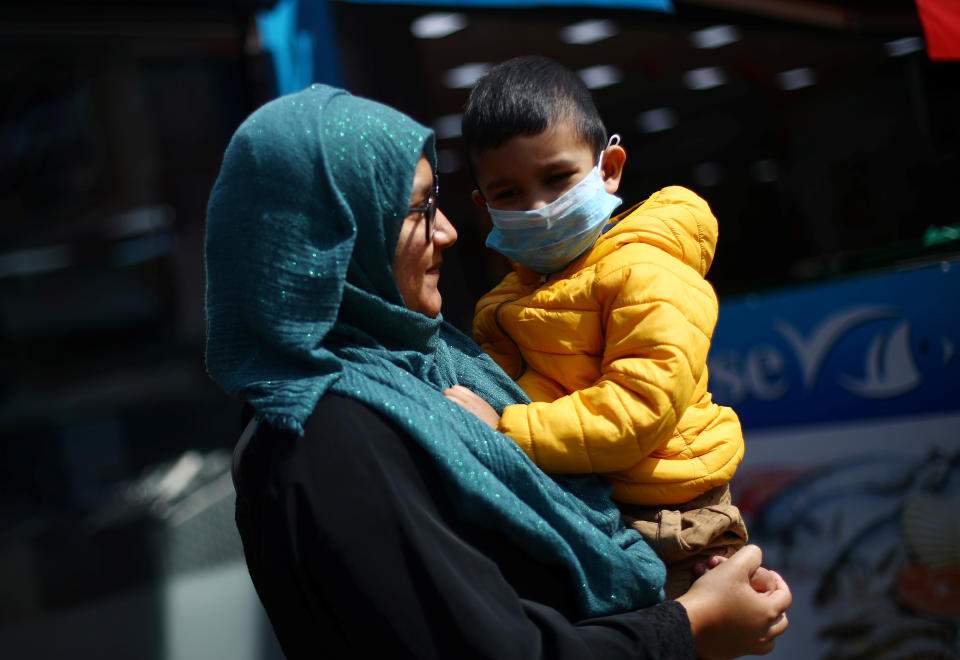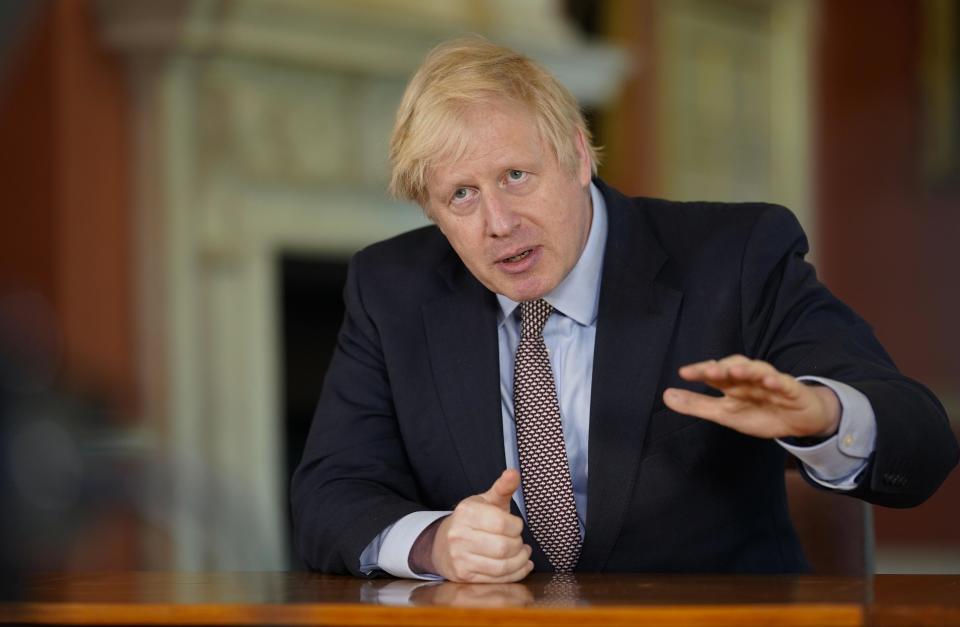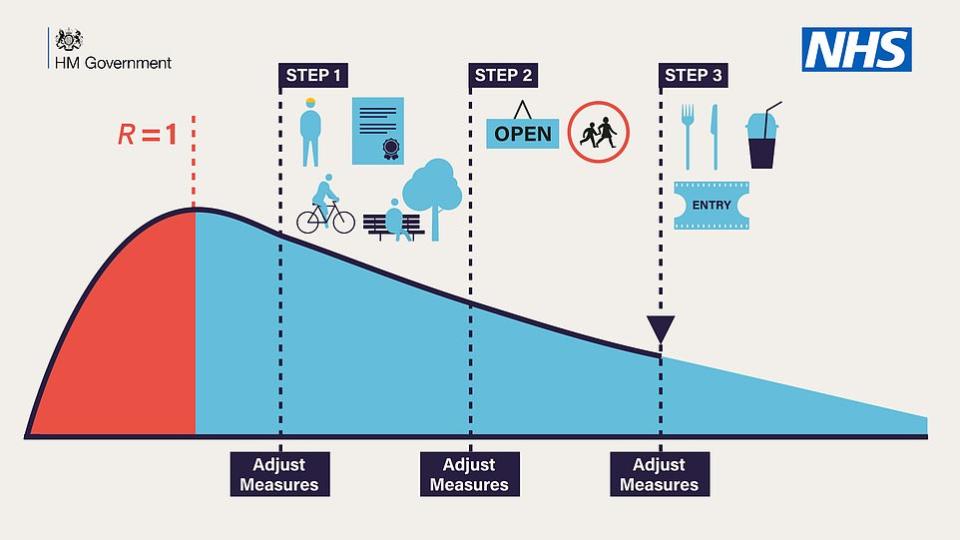Lockdown rules: Wearing face masks will not be legally enforced

Britons are being urged to wear face coverings when out in public to prevent the spread of coronavirus, but the new rules will not be legally enforceable, the government has confirmed.
Boris Johnson told Parliament: “With more activity outside our homes we’d now advise people to wear a cloth face covering in enclosed spaces where social distancing is not always possible and you’re more likely to come into contact with people you don’t normally meet.
“Face coverings can help to protect each other and reduce the spread of the disease, particularly if you have coronavirus-like symptoms.
“But this does not mean wearing medical face masks… which must be reserved for people who need them.”

A government document explaining the details of new lockdown rules, published on Monday, said: “Increased mobility means the government is now advising that people should aim to wear a face-covering in enclosed spaces where social distancing is not always possible and they come into contact with others that they do not normally meet, for example on public transport or in some shops.”
The guidance said that homemade cloth face-coverings could help reduce the risk of transmission in some circumstances.
Latest coronavirus news, updates and advice
Live: Follow all the latest updates from the UK and around the world
Fact-checker: The number of COVID-19 cases in your local area
6 charts and maps that explain how coronavirus is spreading
“Face-coverings are not intended to help the wearer, but to protect against inadvertent transmission of the disease to others if you have it asymptomatically,” it said.
“A face covering is not the same as a facemask such as the surgical masks or respirators used as part of personal protective equipment by healthcare and other workers. These supplies must continue to be reserved for those who need it.”
Experts have previously suggested that, in order for the use of masks to be an effective tool in reducing infections, around nine in 10 people need to wear them, while medics have warned that wearing masks could actually put healthy people more at risk.

Some groups – such as people with breathing problems or young children – may struggle to wear face coverings, and it is not advised that children under two have their faces covered.
The document states that face coverings are not compulsory, and a Department of Health and Social Care press release added: “[Face masks] do not need to be worn outdoors, while exercising, in schools, in workplaces such as offices, and retail or by those who may find them difficult to wear.”
England’s chief medical officer Professor Chris Whitty said face coverings are not a replacement for social distancing and regular hand-washing – which remain the most important actions.

Officials said people can face make coverings at home, and that “the key thing is it should cover your mouth and nose”.
The World Health Organization has said it is imperative that medical masks are prioritised for health and care workers. But it has also suggested that people in the community who have COVID-19, or are caring for someone with it, should also wear medical masks.
Last month, Scotland issued guidance on the use of face coverings in public, urging people to use coverings in enclosed spaces where the two-metre social distancing rule is hard to maintain – for example in food shops or on public transport.

Officials have said that the science behind the use of face masks and face coverings is “not straightforward”.
One of the main routes of the spread of coronavirus is through droplets – usually through coughs and sneezes - but they can also spread through talking.
The Scientific Advisory Group for Emergencies (Sage) has said that the evidence of masks preventing the spread of infection from one person to another is “marginal but positive”.
The World Health Organisation has stressed that there is no evidence that wearing a mask – whether medical or other types – by healthy people in the wider community can prevent them from infection with respiratory viruses, including COVID-19.
Guidance on making your own mask at home can be found on the official government website, with suggestions on using old T-shirts or material sewn together.
London mayor Sadiq Khan has repeatedly urged the city’s residents to wear face coverings while travelling on public transport and visiting shops.
In a statement sent to Yahoo News UK on Monday, Khan said: “Please avoid public transport wherever possible. I urge all Londoners to rethink the way they travel. Please avoid peak times, wear a non-medical covering over your nose and mouth and carry a hand sanitiser.”

Trish Greenhalgh, professor of primary care at the University of Oxford, said on Monday: “I’m delighted that the government has changed its position on face coverings for the lay public.
“The science on this is clear: COVID-19 is most commonly transmitted by droplets emitted when we cough, sneeze, shout, sing and even just breathe in close proximity to others.
“Cloth face coverings are highly effective at blocking droplets coming out of the mouth and nose. They’re not perfect, but if you can stop 90% or 95% of the droplets this will cause a very dramatic reduction in the number of people who catch the virus.”
Face coverings should not be used by children under the age of two, or those who may find it difficult to manage them correctly, for example primary age children unassisted, or those with respiratory conditions.
It is important to use face coverings properly and wash your hands before putting them on and taking them off.


